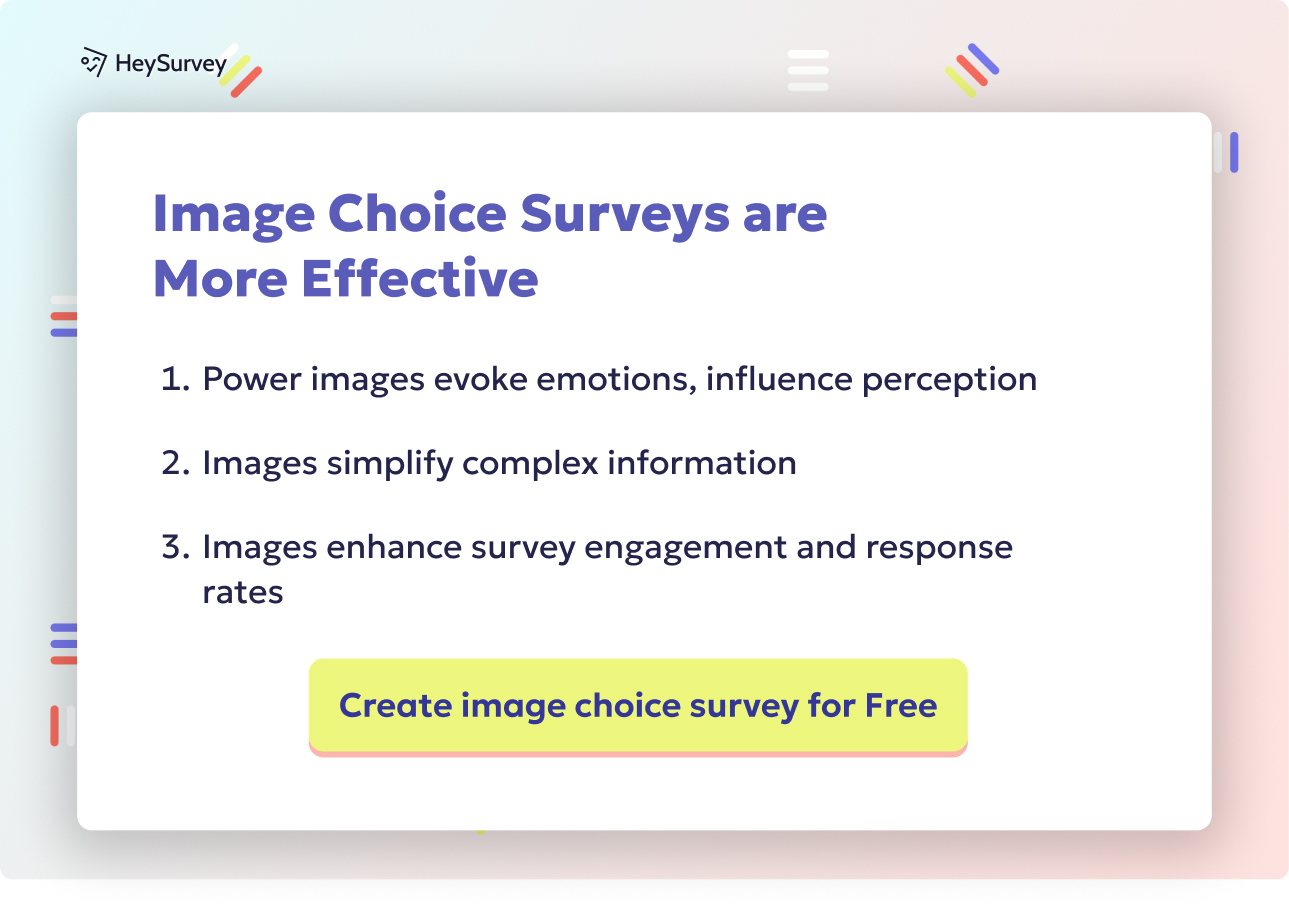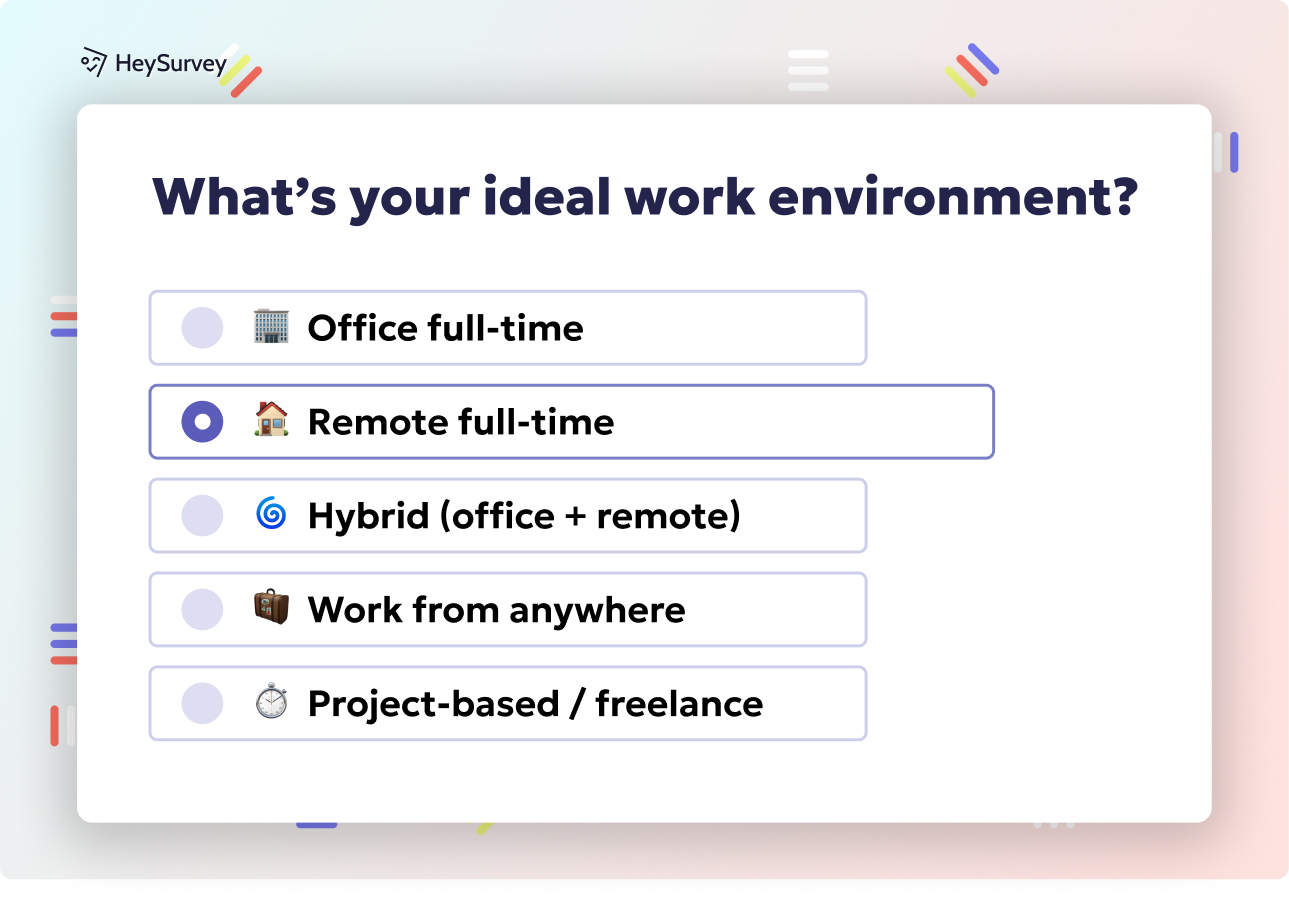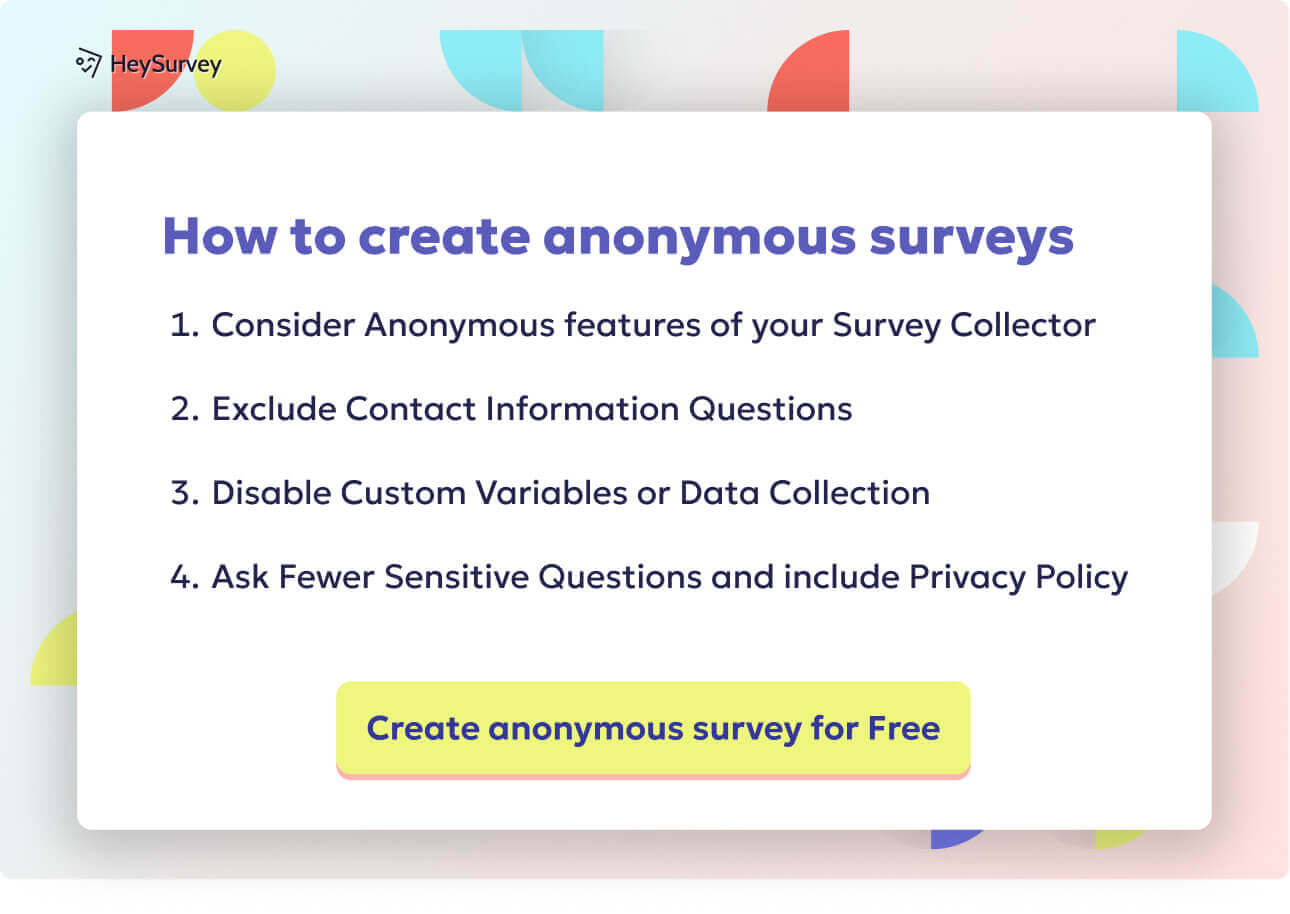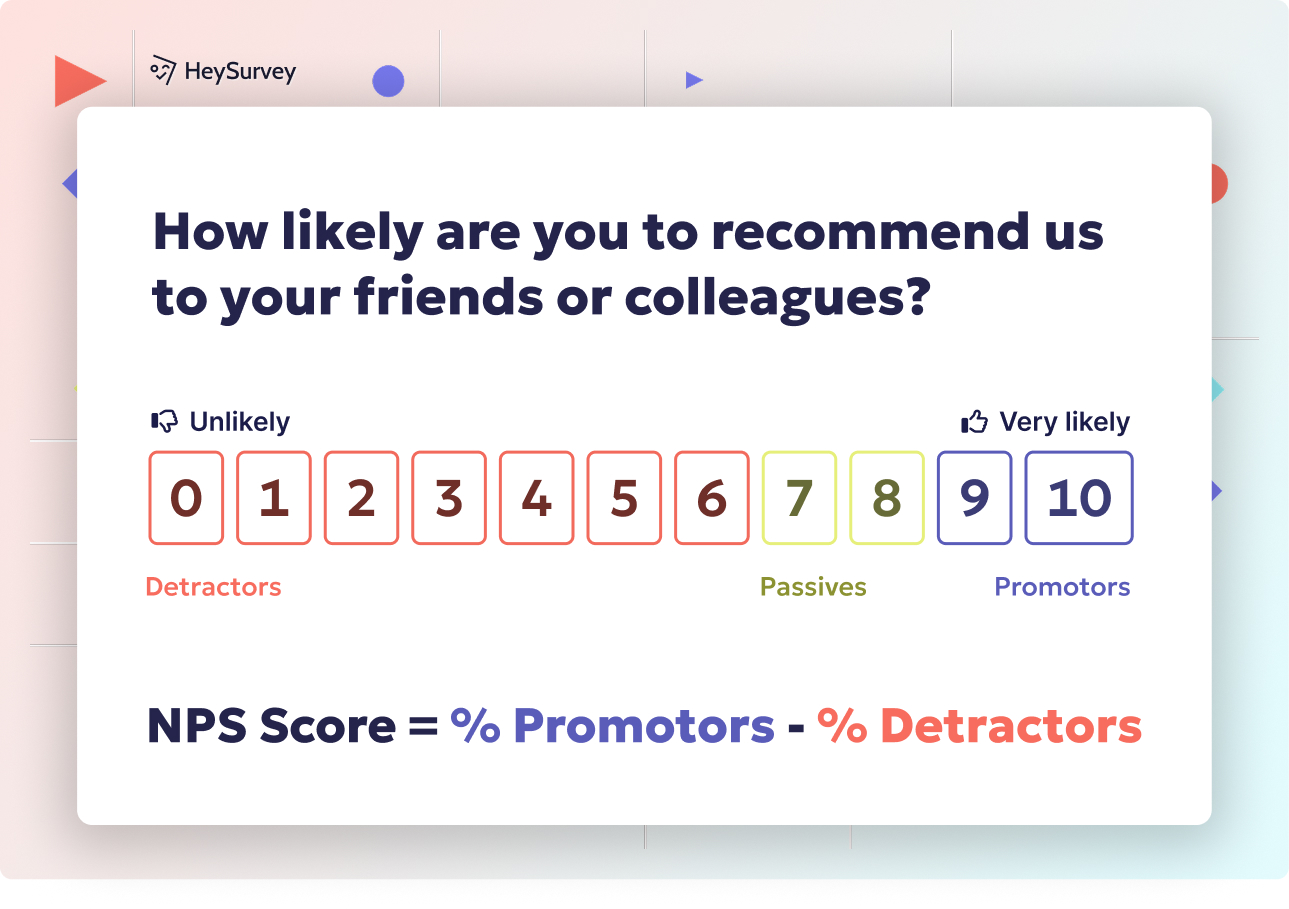30 Buddy Program Survey Questions to Boost Engagement
Discover 25 expertly crafted buddy program survey questions to enhance your participant feedback and optimize your buddy program’s success.
A great welcome can make all the difference on Day 1. That’s where the buddy program shines—pairing every new hire with a friendly guide is proven to boost engagement, connection, and loyalty. But how do you know if it’s working? A smart buddy survey at every stage reveals what’s awesome, what’s awkward, and what could spark your best onboarding yet. Dive in for actionable survey questions, friendly advice, and tips to keep every new hire’s journey smooth from start to finish.
Pre-Onboarding Expectations Survey
Why & When to Use
Before your new teammate takes that first official step, you have a golden opportunity. Launching a pre-onboarding expectations survey helps you get inside their head—what are they excited about, and what makes them bite their nails? You’ll spot when a new hire expresses hesitation about their role and struggles to connect with the team, so you can quickly pair them with a buddy to provide guidance and support, not just leave the new hire to adapt on their own.
Here’s the thing: By collecting early feedback, you make sure you don’t assign additional tasks to boost their confidence unless needed. Instead, you match each person with a sample buddy who’ll calm nerves, answer questions, and can help them shine.
- Build trust right away
- Solve nerves before they snowball
- Ask what matters before Day 1
- Personalize every pairing
- Avoid the “one-size-fits-all” approach
It’s not about a standard welcome email. It’s about unlocking specific insights that help you create the dream welcome experience.
5 Sample Questions
On a scale of 1–5, how confident do you feel about starting your new role?
What specific areas of the job are you most eager to learn about from your buddy?
Which communication channel do you prefer for quick questions (chat, email, phone, video)?
Do you have concerns about integrating with the team that a buddy could help address?
What does a successful first month look like to you?
Set this quick pulse right after the offer is accepted. That way, your sample buddy can greet them with just the right info on Day 1—no awkward guessing games.
New hires with onboarding buddies are significantly more engaged—employees with a positive acclimatization experience are 1.8 times more likely to be engaged, underscoring the value of buddy systems in early onboarding (McLean & Company)

Certainly! Here are simple, step-by-step instructions for creating your survey with HeySurvey, even if you’ve never used HeySurvey before. To speed up setup, you can use the template provided—just click the button below these instructions to begin.
3 Easy Steps to Create a Survey with HeySurvey
Step 1: Create a New Survey
- Open the template by clicking the “Use This Template” button below.
- The survey will open in the Survey Editor, where you can change the survey title and get started right away.
Step 2: Add Your Questions
- Click Add Question at the top or between any questions in the template.
- Choose the type of question you want to add (e.g., multiple choice, scale, text).
- Enter your question text, descriptions, and adjust any specific settings for that question.
- Repeat this process for each question you want to include.
Step 3: Publish Your Survey
- When you’re happy with your questions, click the Publish button.
- If you’re not already signed in, you’ll be prompted to create an account or log in before publishing.
- Upon publishing, you’ll get a shareable link for your survey.
Bonus Steps for a Professional Survey
Apply Your Branding:
Go to the Branding or Designer Sidebar. Upload your logo and adjust colors, fonts, and backgrounds to match your brand.Define Survey Settings:
Open the Settings Panel to set a start/end date, limit responses, add a redirect URL, or choose whether respondents can see summarized results.Add Logic or Branching:
For advanced surveys, set up branching so questions adapt based on previous answers. Click on a question, then define which question should come next depending on each answer.
Ready to begin?
Click the button below to start your survey with this template.
First-Week Pulse Buddy Survey
Why & When to Use
The buddy survey first-week pulse is your secret radar. After five business days, it catches if that new energy turned into confusion or connection. Did your new hire light up, or did they look lost at lunch?
Checking in this early lets you detect red flags before they become regret. Didn’t hear back from someone? Maybe they need to pair them with a buddy to provide guidance and support again, or assign additional tasks to boost their confidence. Or maybe just ask if the new-hire experience feels right.
- Gauge first impressions fast
- Catch problems before they snowball
- Fine-tune buddy assignments based on real-time feedback
- Ensure no one gets lost in the shuffle
Here’s a sample scenario: a new hire expresses hesitation about their role and struggles to connect with the team. This is your cue, not a cue to leave the new hire to adapt on their own. Instead, you take action based on what you learn.
5 Sample Questions
How often did you communicate with your buddy this week?
Rate the helpfulness of your buddy’s guidance so far (1–5).
Which topic did you wish your buddy had covered in more depth?
Have you met at least three team members with your buddy’s help? (Yes/No)
What one thing would improve the buddy experience next week?
Keep this buddy survey short and sweet, so you’ll always get real feedback before things go sideways.
New hires who met with their onboarding buddy more than eight times in their first 90 days reported a 97% increase in perceived speed to productivity (techcommunity.microsoft.com)
Mid-Onboarding Check-In Survey (Week 4)
Why & When to Use
By week four, you’re at the crossroads. Is your new hire thriving or simply staying afloat? The midpoint buddy program survey questions reveal if key skills have stuck and which bumps need smoothing.
Midpoint surveys let you intervene—before small struggles grow. Don’t just leave the new hire to adapt on their own; instead, ask them what’s working and what’s still murky. Plus, get ready to assign additional tasks to boost their confidence or even introduce a secondary sample buddy for supercharged support.
- Track progress before it’s too late to turn things around
- Spot if training or resources are missing
- Strengthen peer relationships across departments
- See how well the buddy program really fits their needs
If a new hire expresses hesitation about their role and struggles to connect with the team, you can offer direct solutions: pair them with a buddy to provide guidance and support, rather than escalate the issue to HR immediately unless necessary.
5 Sample Questions
Describe a moment when your buddy’s support directly improved your work.
Rate your sense of belonging within the team today vs. Day 1.
Which resources or training are still unclear?
How confident are you in performing your core tasks independently?
Would pairing with a secondary buddy in another department be valuable?
These midpoint insights help you adjust the buddy program—because a little course-correction now can mean big success later.
Post-Onboarding New-Hire Experience Survey (Week 8)
Why & When to Use
The onboarding finish line is in sight—now’s your chance to collect survey questions to evaluate buddy programs and celebrate what worked! This feedback teaches you what new hires actually valued, and what was meh.
Did the whole buddy experiment rock their world or just confuse them? Skip the guesswork and ask, so you know whether to assign additional tasks to boost their confidence in future or rethink your matching. On top of that, learn if a new hire expresses hesitation about their role and struggles to connect with the team, and how the buddy experience played a part.
- Spot superstar buddies for future pairings
- Get ideas for new icebreakers or resources
- Understand what made the biggest difference
- Build a running list of “must keep” moments
Here’s the truth: not all new hires need to escalate the issue to HR immediately if something felt off. Better to hear it first and course-correct for the next class.
5 Sample Questions
Did the buddy program meet your initial expectations? (Yes/No + Why)
Which buddy interaction was most memorable and why?
How likely are you to recommend the buddy program to future hires? (0–10)
What should we stop, start, or continue doing in the buddy program?
What additional support do you need after formal onboarding ends?
Treat this feedback like gold. It’s your best guide to keep your buddy program in “awesome” territory every time.
New hires who met with their onboarding buddy more than eight times within their first 90 days reported a 97 % increase in perceived speed to productivity (physicianleaders.org)
Buddy Experience & Feedback Survey (Buddy Perspective)
Why & When to Use
Don’t forget your sample buddies! Their insights bring the other side of the story. They’re your unsung heroes—the ones who pair them with a buddy to provide guidance and support when a new hire expresses hesitation about their role and struggles to connect with the team.
Their buddy survey for mentors makes sure they’re not overburdened or confused. Plus, it keeps the “support squad” happy so they’ll volunteer again.
- Check if roles and workload are clear
- Ask if tools or training are missing
- Spot burnout before it hits
- See what inspires people to mentor in the first place
If someone’s drowning, don’t just leave the new hire to adapt on their own—listen, react, and always have your buddies’ backs.
5 Sample Questions
How clear were your responsibilities as a buddy?
Estimate the weekly time you spent supporting your new hire.
Which tools or resources would make mentoring easier?
What challenges did you face while guiding the new hire?
Would you volunteer as a buddy again? Why or why not?
Your best buddy survey feedback often sparks genius ideas or small tweaks that make the whole program happier.
Manager/HR Program Effectiveness Survey
Why & When to Use
Here’s your eagle-eye view. A program feedback survey for HR spotlights whether the whole operation is humming or needs a tune-up.
Managers can check if onboarding is faster, if employees are more engaged, and if all those clever buddy pairings actually paid off. They’ll see if you need to assign additional tasks to boost their confidence next time, pair them with a buddy to provide guidance and support differently, or escalate the issue to HR immediately only when really critical.
- Track speed to productivity by new hires
- Spot team spirit and engagement upticks
- See if buddies benefit as much as their charges
- Suggest new metrics or flag unresolved issues
You don’t want to leave the new hire to adapt on their own, and you definitely don’t want unhappy mentors. This survey closes those gaps.
5 Sample Questions
How quickly did the new hire reach expected productivity compared to past cohorts?
Did you notice increased engagement from employees acting as buddies?
What qualitative changes have you seen in team collaboration?
Which metrics should we add to evaluate buddy program ROI?
Should we escalate any issues to HR or did the buddy model resolve them?
A manager’s view connects the dots—if everyone reports wins, you know your onboarding recipe works.
90-Day Retention & Engagement Follow-Up Survey
Why & When to Use
Don’t let the story end once onboarding is over. This long-term buddy program survey arrives at the 90-day mark, measuring big-picture impact. Did the buddy system help them stay, learn, and love the company?
Look for correlation between lasting confidence and the buddy program. If success is tied to being able to pair them with a buddy to provide guidance and support, you have proof. If not, you’ll know what to adjust.
- See if connections endure past “official” guidance
- Spot if job confidence keeps rising
- Ask if they’d like to become mentors themselves
- Learn what keeps top talent happy
And yes—if someone recommends you escalate the issue to HR immediately, time for a bigger conversation!
5 Sample Questions
Do you still consult your buddy for guidance three months in?
Rate your overall job confidence now versus Day 1.
Which aspect of the buddy program had the biggest impact on your decision to stay?
Have you recommended becoming a buddy to others?
What ongoing peer-support mechanisms would benefit you?
These survey questions for program feedback after 90 days are super valuable. They let you build a support experience that stands the test of time.
Best Practices & Dos and Don’ts for Buddy Program Surveys
Creating lively, effective buddy surveys isn’t rocket science, but a few smart moves make all the difference. Let’s keep it practical and upbeat, with some lightly cheeky wisdom tossed in because you’ve earned it.
- Keep every survey tight—think 10 questions max
- Mix up scaled questions with juicy open-ended ones
- Always close the feedback loop (tell people what you changed!)
- Anonymize sensitive responses to keep answers honest
- Break up “big” milestones with friendly one-minute check-ins
What not to do? Survey fatigue creeps in fast if you get too chatty. Ditch the leading questions (“Was your buddy amazing?” Make them work for that praise). Ignoring negative feedback is a no-no—turn it into next-gen improvements. One-size-fits-all timing gets robotic fast; tailor by program stage and role.
On top of that, if you use onboarding software or HRIS with HeySurvey, you can get real-time alerts without lifting a finger—because HeySurvey is free, forever, with zero compromise. Each survey instantly pinpoints if a new hire expresses hesitation about their role and struggles to connect with the team. That’s your signal to pair them with a buddy to provide guidance and support, not leave the new hire to adapt on their own or escalate the issue to HR immediately unless it’s urgent.
Here’s a quick story: Last month, a new hire hesitated about their role before Day 1. A tailored buddy match (thanks to an honest pre-onboarding buddy survey) gave them the boost, connection, and clarity they needed to soar. It’s all about listening—and acting—at every step.
No matter where new hires start in your company, or how much confidence they bring, these buddy survey strategies help you greet every teammate like a superstar and build a culture where everyone’s success is celebrated, supported, and totally stress-free.
Related Onboarding Survey Surveys

32 60 Day Check-In Survey Questions: Examples & Best Practices
Explore 60 day check in survey questions with 25+ sample questions, use cases, and best practices...

31 Customer Onboarding Survey Questions to Improve Adoption
Discover 40 customer onboarding survey questions designed to improve product adoption, gather onb...

32 Onboarding Survey Questions to Boost New-Hire Success
Discover 30+ onboarding survey questions with expert tips to capture, analyze, and act on new-hir...